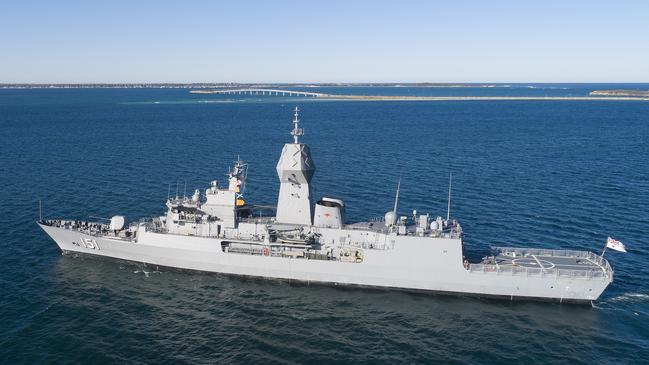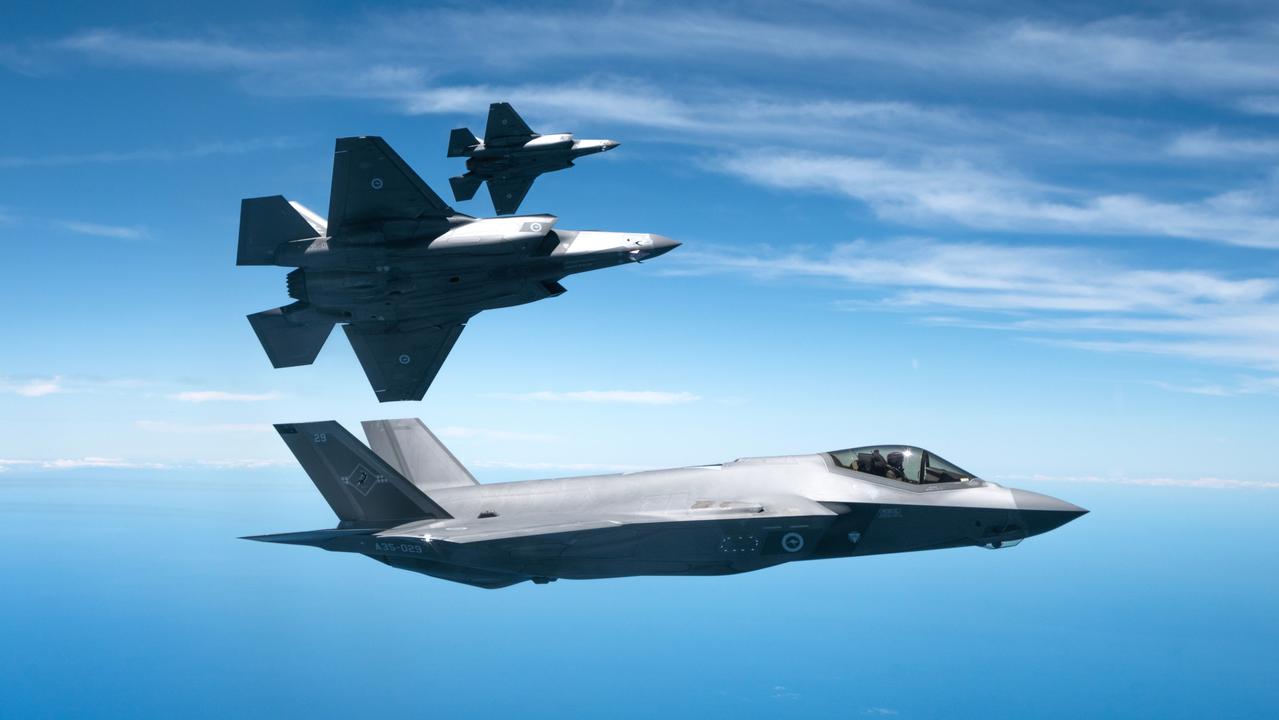Australia to import warships for the first time in 50 years
The trend of building some of our warships locally is set to end with the build of the RAN’s first three General Purpose Frigates (GPFs) in a northern hemisphere shipyard.

While larger platforms such as supply ships and helicopter carriers have continued to be built offshore, the last time Australia ordered a warship from a foreign yard was in 1976 with the purchase of FFGs (frigate, guided missile).
Since then, Anzac-class frigates, Hobart-class Air Warfare Destroyers (AWDs) and the new Hunters have all been constructed locally. Add to these, smaller ships such as Arafura and Cape-class Offshore Patrol Vessels (OPVs).
This trend is set to end with the build of the RAN’s first three General Purpose Frigates (GPFs) in a northern hemisphere shipyard, with the first to be launched by 2029. We don’t know which one of five – possibly six – designs will be selected, though some sort of short-listing decision is expected during November. What is being planned is obscure because the government is refusing to release any details of the $11bn SEA 3000 project and has similarly banned companies from discussing their offers.
Possibly of greater significance is an unexplained decision that the frigates built overseas risk having combat systems incompatible with those of the RAN, making them an orphan sub-class with a crippling support and training burden. The only plan the Navy has – and that’s using “plan” very loosely – is that after being accepted by Australia, they will then be retrofitted with all the systems that the rest of the fleet uses, at a cost of additional billions and over an unspecified number of years.
Following a major effort that started in 1989 with the initial selection of Saab’s 9LV combat management system (CMS) for the Anzacs, that software is found on all the RAN’s surface fleet. It is a highly effective tool for situational awareness, command and control, communications, air defence, anti-submarine warfare and gunfire support. It is open-architecture and can use data from multiple sensors, arguably the most important being the USN’s Aegis combat system and the domestically developed CEAFAR radar suite.
While Saab is Swedish owned, the centre of gravity for naval CMS work shifted to Australia in the 1990s and the company now employs 600 local engineers, mainly at its purpose-built Mawson Lakes facility in Adelaide. Combined with CEAFAR and firing RIM-162 Evolved Sea Sparrow Missiles, this has given the Anzac frigates an unprecedented level of self-defence against attacks from swarms of supersonic anti-ship missiles.
This capability looks set to be junked in favour of a fully imported CMS that will come with the first three GPFs. This is because the government – and the RAN – are following a “no change” philosophy and will buy and then try to introduce into service a ship designed and built for another navy. The motivation seems to be a total overreaction to the problems of the Hobart class, in turn caused by the many Australian-specific modifications to that design.
The competing ships for SEA 3000 are for the navies of Egypt, Saudia Arabia, Thailand, Japan and South Korea. As a major concession, the RAN has accepted that signage and displays must be in English, which thankfully obviates the need for sailors to learn Arabic, Japanese or Korean. Another more recent concession is that ships will need to comply with Australian occupational, health and safety regulations.
However, that is as far as the government has been prepared to go and it appears to be indifferent to the procurement and support catastrophe that they are in the process of creating. In similar fashion, the RAN seems blase about undoing the 30 years of work standardising 9LV and CEAFAR across the entire surface fleet and developing a powerful sovereign capability into the bargain.
If this seems absurd, there are plenty of people in Australian industry who agree, saying they have never seen a process as illogical and potentially destructive as this one. The government replies that the general purpose ships are all about “speed to capability” and “minimum viable capability”.
In other words, because both the RAN and successive governments during the past 10-15 years have failed to make sensible decisions about surface ships, we are now in a desperate rush to plug a looming gap with anything that floats.
A solution would have been to morph the construction of Arafura-class Offshore Patrol Vessels (OPVs) to larger 2200 corvettes, using the existing supply chain. However, that now looks impossible since German designer Luerssen has unsurprisingly decided to exit the country after two years of bureaucratic trench warfare with the RAN. They are now in the process of transferring their shares to WA marine engineering company CIVMEC.
Decision-making in the naval domain seems to be based more on emotion rather than analysis, logic and common sense.
To be fair, some of the bidders for SEA 3000 have included 9LV as an option – they literally could be jailed for confirming that with a journalist – but it’s not something the RAN has mandated.
Another factor is the federal election, which needs to be held during the next seven months. There is a fear in industry that the government is so desperate to announce something – and seek to wedge the opposition – that they might truncate the selection process with a “1.5 approach”.
This apparently means selecting a preferred ship but with a spare sitting in the background. Such an approach is precisely what the RAN did for the AWD program, which swung disastrously off the rails by generating a four-year delay and a $1.4bn cost overrun for a mere three ships.
To short circuit an already irrational and truncated process would be a catastrophe both for the RAN and Australian industry, but the government is seemingly happily embracing this outcome.


